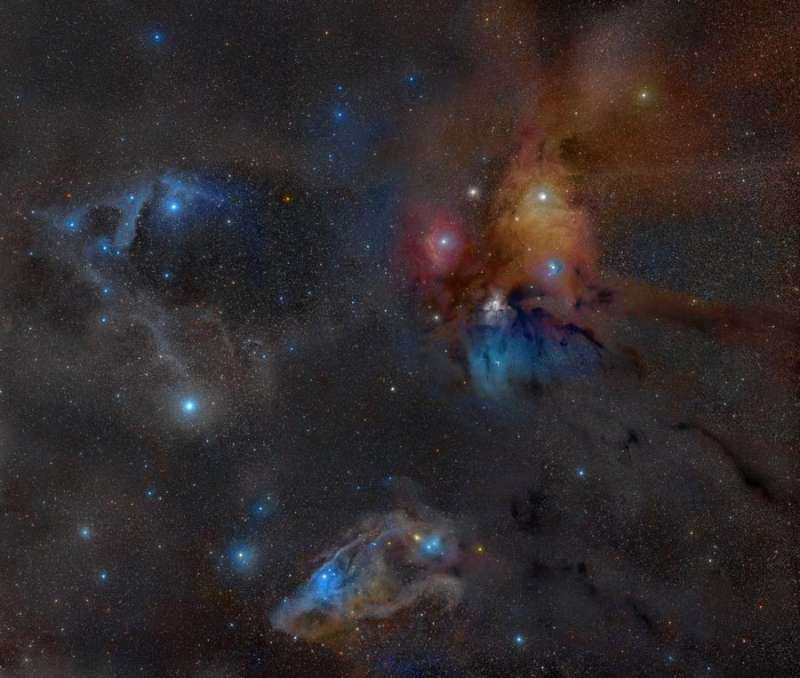
|
Credit & Copyright: Rogelio Bernal Andreo
Explanation:
The clouds surrounding the star system Rho Ophiucus compose one of the closest star
forming regions.
Rho Ophiucus itself is a
binary star system visible in the
light-colored region on the image right.
The star system, located only 400
light years away, is distinguished by its
colorful surroundings,
which include a red
emission nebula and numerous
light and dark brown dust lanes.
Near the upper right of the Rho Ophiucus
molecular cloud system is the yellow star
Antares, while a distant but coincidently-superposed
globular cluster of stars,
M4, is visible between Antares and the red
emission nebula.
Near the image bottom lies IC 4592, the
Blue Horsehead nebula.
The blue glow that surrounds the Blue Horsehead's eye -- and other stars around the
image -- is a reflection nebula composed of fine dust.
On the
above image left is a geometrically angled reflection nebula
cataloged as
Sharpless
1.
Here, the bright star near the dust vortex creates the light of surrounding
reflection nebula.
Although most of
these features
are visible through a small telescope pointed toward the constellations of
Ophiucus,
Scorpius, and
Sagittarius, the only way to see the intricate details of the dust swirls, as
featured above, is to use a
long exposure camera.
|
January February March April May June July August September October November December |
| |||||||||||||||||||||||||||||||||||||||||||||||||||||||
NASA Web Site Statements, Warnings, and Disclaimers
NASA Official: Jay Norris. Specific rights apply.
A service of: LHEA at NASA / GSFC
& Michigan Tech. U.
Based on Astronomy Picture
Of the Day
